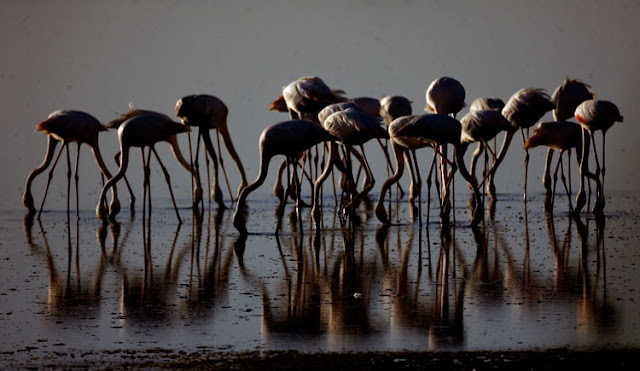.......on the southern slopes of Spain's Sierra Nevada in the Alpujarras is
ideal for anyone in search of clean air, mountain views and authentic
culture.
A spa town in a natural environment with
mountain views and pure spring water, which is bottled and sold
throughout Spain and has even had poems dedicated to it by García Lorca.
Located on an old silk route south to Persia, the town is within easy reach
of Granada and the Costa Tropical while remaining sufficiently off the beaten
track to avoid the stresses of city living.
Most of its 4,000 residents are
friendly towards foreigners, though the culture remains thoroughly Spanish.
 |
| Give me the peace of the hidden source and the blonde look of blond wheat and the strength of mature autumn pines and the Nevada breeze of April breezes |
Lanjarón has five natural springs of medicinal waters and is
often referred to as the 'Fountain of Health', the waters originating from
the Sierra Nevada, Snow Mountains. Also 'the Gateway to the Alpujarras'.
The climate is fresh in summer, with
temperatures rarely going above 28ºC and winters are generally mild,
with minimum temperatures of around 12ºC.
The Spa Baths
The Spa is in the centre of the town of Lanjarón, 43 kilometers from Granada and 500 meters above sea level. Open from March to December.
The properties of the waters include: sodium/calcium, bicarbonates, diuretic, digestive and iron.
Therapies offered for: digestive system, rheumatism, respiratory problems, stress and nervous system.
Treatments on offer: Drinking water,
Jacuzzi baths, underwater massage, jet and circular sprays, inhalation,
steam, mud baths, massage, reflexology, electrotherapy and lymphatic
drainage.
The Spa has a large ballroom and magnificent chandeliers which testify to the importance of the Spa in a bygone age.
.
The Water Museum
The project began with a search for a site with water flowing through
it, eventually alighting on an area to the north-east of town at the
entrance to the Sierra Nevada National Park.
The site lies in a steeply
sloping gulley next to the Lanjarón river and an irrigation ditch that
used to serve the now disused local abattoir.
A specially devised
pedestrian itinerary connects the new museum with historic examples of
water-related building types, such as old watermills and a public
laundry.
The reciprocity between old and new underscores the entire project. The
plain stone sheds of the former abattoir are refurbished and adapted
for museum use. New corrugated metal roofs and white rendered walls
enhance the dignity and simplicity of the original vernacular
architecture. During the course of remodelling, it was discovered that
the buildings were originally used as watermills, giving the project an
added archaeological dimension.
A new courtyard made from stacked prefabricated concrete blocks and
studded with a grid of orange trees contains a shallow reservoir which
is flooded by water at different times of the day. The pool is lined
with horizontally sliced trunks of eucalyptus.
‘The
shade and scent of the orange blossom, the sound of the water and the
reflections when the courtyard is flooded all create a refreshing
atmosphere,’ says architect Juan Domingo Santos.
The Lanjarón Festival of Water and Ham
Since
1980, Lanjarón has celebrated Midsummer's Eve in honour of
San Juan
Bautista, John the Baptist, with its
Fiesta del Agua y del Jamon,Water
and Ham Festival, although the ham aspect has been overshadowed over
the years by the liquid element.
At the stroke of midnight on 23 June,
the small mountain village erupts into the greatest water fight in
Spain, and maybe even the world.

Famous for its mineral water, Lanjarón is the perfect destination for
this crazy water war. Locals make sure they park their cars out of town
in anticpation of the liquid onslaught that attracts revellers from all
over the country and further afield.
At midnight, participants take to the streets armed with buckets, water
pistols, and anything else they can get their hands on. Total strangers
soak each other to the skin, while ladies spray the crowd with hose
pipes from the safety of their balconies, filling up their buckets in
the process.
By the time the whistle blows at the end of the fight, there is a river
running through the streets, and all are soaked to the bone. After a
quick change of clothes, the
cerveza starts pouring, fireworks fill the
sky and the real party begins.
Over the next few days, revellers
celebrate the calm after the storm with a feast of mouthwatering jamon, ham, another product for which Lanjaron is renowned.
The Moorish Castle of Lanjarón
Only its ruins remain over a rocky promontory near to the town, at around an altitude of 600m.
Its location was superb, because
it dominated on one hand, the access road to the Alpujarra and, on the
other, the road that connected Granada with the Coast.
The castle was
surrounded by a wall, defended by two great towers of rubblework, one to
the north, semi-circular, and the other, to the south.
Fernando the Catholic King conquered the town in 1490. Its Moorish
inhabitants rebelled again in 1500, a revolt that was controlled by the
Christians after an epic defence. The captain who defended the place
preferred to throw himself from a tower before surrender.
It
participated in an active way against the Napoleonic troops in the
Independence War, its inhabitants receiving the qualifying name of
“canoneros” since then.
The castle is currently being renovated.
Now
closed for conservation reasons, the road actually goes right across
the top of the Sierra Nevada, through the National Park and the
reason for the closure,straight to
Granada, but not in winter…as it is snowbound!
















































